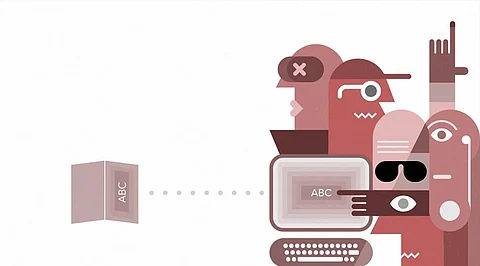
- Insights
- Cryptocurrencies
- Stocks
- White Papers
- Industry
- Geography
- Insights
- Cryptocurrencies
- Stocks
- White Papers
- Industry
- Geography


Optical Character Recognition (OCR) is one of the few innovations that have found use across the overall industrial sector, resulting in immediate labor savings. With OCR, a large number of paper-based documents in a variety of languages and formats can be digitized into machine-readable text, making previously unavailable data accessible to anyone with a single click.
OCR is a sophisticated technology that identifies text characters in images such as printed books, pictures, and scanned documents. It transforms text containing images into characters that can be edited, computed, and analyzed by computers in subsequent steps.
A set of words, numbers, and images can be found on each page. This knowledge is easily comprehended by the human brain. Computers, on the other hand, lack this capability. Their interpretation of content is devoid of sense and significance.
The use of optical character recognition (OCR) helps to solve this problem. All data on the page is converted to a sequence of universal binary lines. These lines are then sent to a server, which scans, reads, and reassembles them. All characters are duplicated, and they are transported from the desk to the desktop. OCR speeds up transcriptions and makes mining more effective.
Paper Documents Are Being Digitized
Manual process of entering contacts obtained at a tech conference or event into a contact management system, or CRM, is one of the time-consuming tasks that OCR can remove. Contacts can be immediately converted into digital form using OCR software capable of reading business cards. This is a place where you can meet new people and learn about new business models. When an organization collects data in a standardized, consistent format with a high transaction frequency, OCR may help.
Accessibility
Once a file has been scanned by OCR and stored in a standard database, anybody with access to that database has exposure to it. This is especially useful for banking, which can access a customer's past cheques at any time and from any location in order to examine their credit record.
Increasing Security
Security enhancements are required in digital environments, particularly for sensitive data handled by police forces, civil agencies, or simply for personal data processing. OCR technology is designed to detect and avoid fraud incidents by comparing given data with data stored with a minimal of error, which is impossible to do manually.
Translation from one language to another
OCR technology senses textual data in an image and converts it into a machine-readable character form while also recognizing the language. Using the Google Translate app, the technology can be extended to road markings or written texts. It uses a handheld camera as a scanner and works immediately. More than 100 languages are supported by the OCR-based app.
OCR and AI
As innovative tech providers merge OCR resources with AI, they are experiencing a quiet revolution. As a result, data collecting software is capturing information while also understanding the content. In practice, this means that AI tools can search for errors without the assistance of a person, allowing for more efficient fault management.
Integrating AI and OCR is proving to be a successful data capture and management technique. Though AI-based OCR tools might not be as flashy as other disruptive innovations, they will undoubtedly have a significant effect on the bottom line of businesses that adopt them. It is important to reduce operating costs in order to increase employee productivity.
